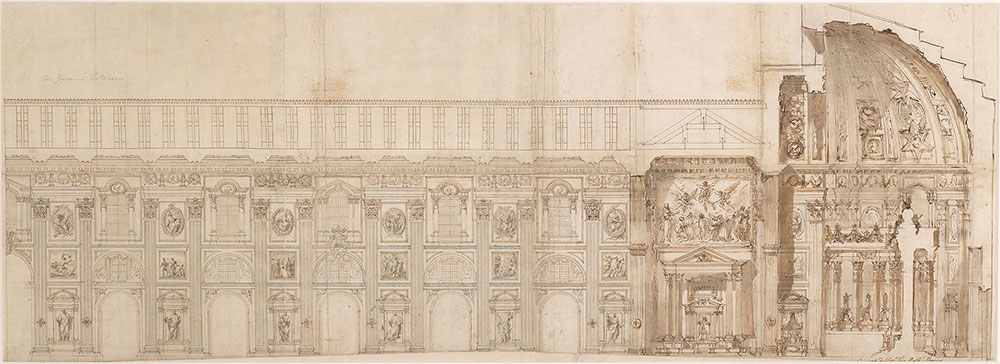
Giovanni Battista Piranesi and workshop
Proposed alteration of San Giovanni in Laterano, with columnar ambulatory, ca. 1763–64
Pen and brown ink and wash, and gray wash, over graphite
The Morgan Library & Museum, Bequest of Junius S. Morgan and Gift of Henry S. Morgan; 1966.11:55
John Marciari: The façade and nave of the ancient basilica of San Giovanni in Laterano had been the focus of extensive restoration in the seventeenth and eighteenth centuries, but the altar end of the church was ill suited to the needs of the modern liturgy, with a very shallow apse and essentially no choir. Pope Clement XIII thus turned his attention to the project, and by the fall of 1763 was said to be reviewing proposals from various architects. Piranesi emerged as the pope’s favorite, and he presented Clement with a number of different proposals for rebuilding the church. By 1764, however, work had been canceled. Rome was in the middle of a terrible famine, which put a strain on Vatican finances, but rivalries between Piranesi and the architectural establishment may have played an equally important role in stopping the project. Luigi Vanvitelli, then the leading architect in the city, jealously opined that “Maybe, if the Pope reflects well on the matter, he will suspend the renovation of San Giovanni in Laterano; the real reason for so doing is that he should not allow a madman, like Piranesi, to direct such work, because he is not capable of it.”
The most detailed of the drawings connected with the project, this sheet shows the entire basilica, with the nave as rebuilt by Francesco Borromini, the transept renovations done around 1600 at center, and—at right—Piranesi’s most elaborate scheme for a high new apse, which is flooded with light from a window above, and with the altar set in front of a screen of columns. This last motif harks back to one Piranesi’s earliest architectural fantasies, which is seen at the start of the exhibition.
